Choosing Our New Road Bike
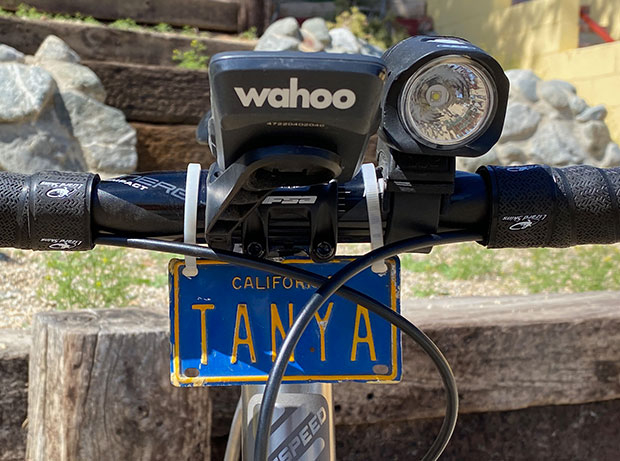
There are two new bikes in our household – one road and one tri – and I’m going to write about them both. In each case I’ll write about the process of getting the bike: how we chose; why we chose; what size we chose and so on. In this case the bike is a Litespeed Arenberg and it’s my wife’s new road bike. We had a list of imperatives driving the decision, but in general the bike needed: to fit, handle, be comfortable, be of a sufficient quality, and as features offer 12-speed, electronic shifting, disc brakes, with the capacity to upgrade touch points.
Tanya’s height is in her legs and if there’s one area where women might be morphologically distinct from men – for bike fitting purposes – I tend to see a somewhat higher percentage of leggy (high waisted) women than I do of men. That said, I don’t stipulate to the existence of women’s geometries. Bikes fit people, not genders, and geometries fit morphologies, not genders. If your height is in your legs – as is the case with many men and many women – that’s a particular geometry. If you’ve got a long torso and shorter legs – which can be the case for both men and women – then that’s another geometric style.
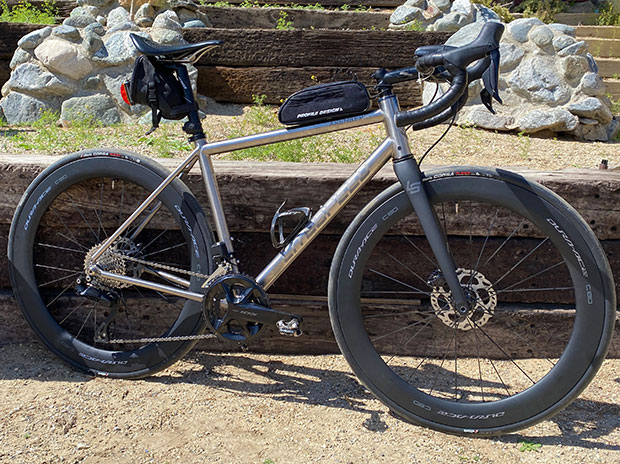
Tanya’s existing road bike is a Giant Defy. It’s got electronic shifting but it’s first generation. Her Defy has a 10-cog cassette and she’s had that bike for 7 or 8 years. Her new Arenberg has Shimano 105 electronic, 12 cogs in the rear, and retail on this complete bike is $3,950. One reason I recommended the Arenberg to Tanya is that it’s a top caliber frame built with what I consider one of the two best groupset deals going: SRAM Rival AXS or, in the Arenberg’s case, Shimano 105 Di2. Each groupset is an aggressively-priced version of each company’s latest groupset tech.
Back to that Giant Defy, it’s “endurance” geometry. As you know if you read what I write on this subject, I hate that. There is little about the Defy that makes it endurance. It’s a really great bike that’s built with a lot of stack for a given reach. Remember, stack and reach are the rise and run from the bottom bracket to the head tube top and it’s an absolute measure of a frame’s height and length for fit purposes.
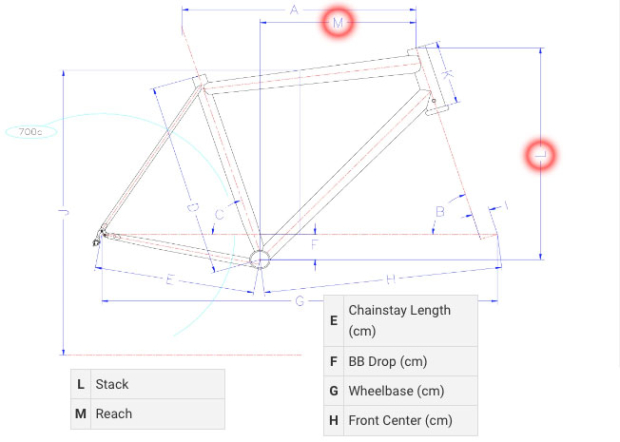
In Tanya’s case, her Defy in size 54cm has a stack and reach of 566mm ad 376mm respectively. That’s a lot of stack for that amount of reach. To give you a sense of this, one of my road bikes is a Cervelo R5 and that bike has a stack and reach of 547mm and 380mm respectively. The R5 is by no means a “long and low” bike. A Cannondale SuperSix EVO has in size 51cm a stack and reach of 535mm and 378mm so, functionally the same length as the Arenberg but 31mm lower. Tanya already has about 25mm of total headset spacer and top cap sticking up from her frame on her Arenberg (and on her Defy) so putting her on the Cannondale would have raised that up another 30mm. She’d have had her handlebars perched on top of a pole vault pole.
Of course my wife could have ridden that Cannondale, in the next size up. The size 54mm has a stack and reach of 555mm and 384mm, but, it’s a centimeter too long for the stem I’d like her to ride, and it’s a centimeter or two too tall. The Arenberg is a better fit. It’s got a stack and reach in size 54mm of 565mm and 375mm, which is to say, an almost dead-on match to her Defy.
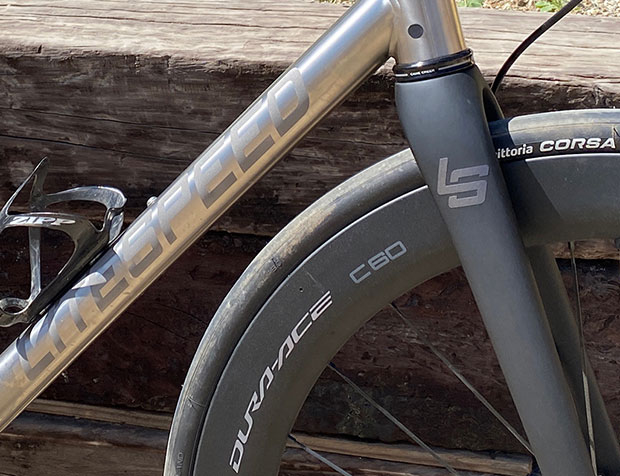
I’ll be off this jeremiad with just this final sentence: whether my wife races on the road or rides a grand fondo her position is what it is aboard her bike. Her frame choice was not determined by use case but by a geometry that placed a frame underneath her. The imperatives – what I considered important, fitwise – was a front end that made sense. A stem not too long or too short. A stem not angled way up (I prefer a -6° stem or a -17° stem, or something in between). A sensible number of headset spacers (I prefer no more than 25mm of total headset top cap and spacers between frame and stem).
There are of course handling considerations. I wanted a reasonably long wheelbase for her size because her center of mass is higher than normal (because her long legs push her a bit higher in the air). The Arenberg in her size has a longish 420mm chainstay, and a longish 586mm front center (due to a 72° head angle and 45mm fork offset). There is 76mm of BB drop, which is lowish and sinks her down a bit toward the ground. In other words, the things that do make this a sort-of endurance frame are the design choices that happen below the waist of the frame: these metrics down around the wheel axles and wheelbase line. The Arenberg will be a comfortable, predictable handler and will be so because the designer of this frame made these design choices.
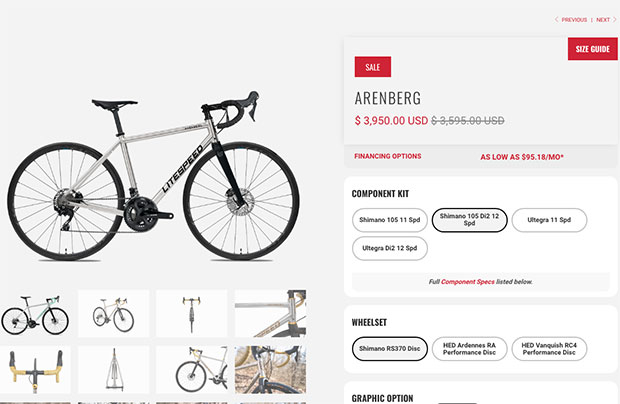
But when we received the bike we were not quite done. Shimano’s shifter hoods are longer than they used to be, and that affects fit. But the handlebars spec’d on road bikes these days are shorter than they used to be (in bar reach), and that someone offsets this. Still, in my fit studio I have two pieces of equipment on which my subject rides: my fit bike, and a Wahoo KICKR ROLLR. I don’t use the latter for stationary training (I’m on a KICKR and a Climb). I used the ROLLR as an easy way to take the next step after a fit session. The fit bike is used to establish a rider position and prescribe the bikes that will fit that position (e.g., to give me the stack and reach of frames that will work). Then the bike is ordered, and built, it shows up, but there still might be a little noise in the process. The new bike, with rider aboard, goes on the ROLLR before it goes out on the road. This is a lot easier than putting the bike on a trainer because I don’t have to take the wheels off. And, the ROLLR has a bit more roadfeel than a typical trainer.
When we ordered the bike from Litespeed I asked for the bike to be built with a specific front end config (stem length and pitch, and the number of spacers), because I knew her fit coordinates. This allowed Litespeed to cut the exposed hydraulic brake lines exactly to length. Another imperative of mine were exposed brake lines running underneath the handlebar tape. This allows me to make a stem change (or a handlebar change if we want) in 15 minutes rather than 2 or 3 hours. Tanya rode her new Arenberg (once we got it) on the ROLLR to doublecheck the fit and we got lucky: No changes needed to be made.
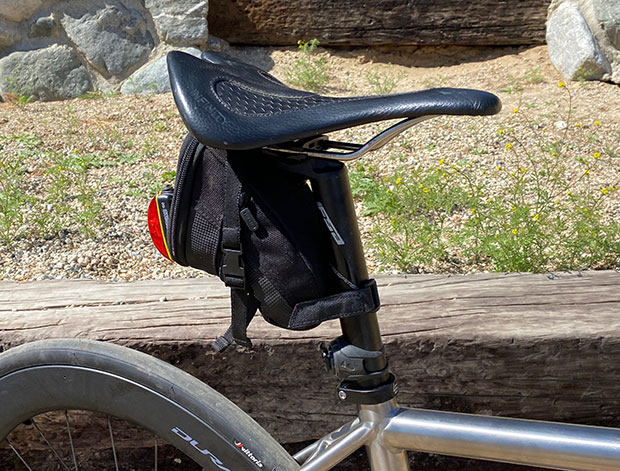
This last thing – exposed brake lines – is why I own a Cervelo R5. If I get another road bike I have my eye on a Specialized Aethos, because it’s made in my geometry, appears a great bike for what I like to do (climb and descend) and, again, it’s got exposed hydraulic lines. The sorry fact is that even if bikes are adjustable they are rarely adjusted if it means de- and recabling hydraulic lines in order to change a stem or handlebar. The exceptions are aero bikes that anticipated the need for adjustment, like Cervelo’s S5 or Cannondale’s Knot system for its SystemSix road bikes. More and more folks are riding handlebars they don’t like and bikes that don’t fit in order to get the Ducati look and, like buying a Ducati, you throw your leg over the saddle and ride and just hope it fits.
This was the process we went through when getting my wife’s new road bike. We made some changes to the stock Arenberg. Tanya is wedded to her Infinity saddle. I had some Dura Ace C60 wheels that I was not at the moment riding so I put these on Tanya’s new Arenberg along with 28mm Vittoria Corse N.EXT tires mounted tubeless. In fact, I’m going to swap Tanya wheel for wheel. I’m riding a set of CADEX Allroad wheels with CADEX 32mm road tires on my Cervelo R5 and while Tanya loves the Dura Ace wheels she hasn’t yet ridden them in gusty sidewinds. I think she’ll fare better with the CADEX wheels so she’ll give those a try. (The Arenberg is optimized for larger road tires and can accept tires up to 35mm.
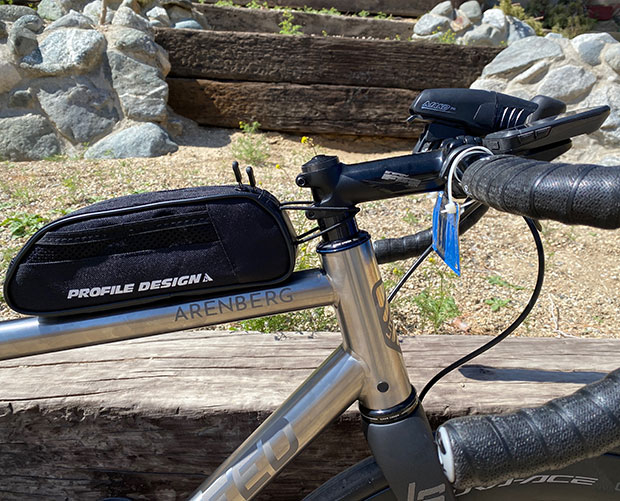
Tanya rides Shimano SPD offroad pedals for both road and on her gravel bike. She likes a lot of lights on her bike, and has one front light and 2 rear blinkers always going when (daytime) road riding. She (and I) love Ergon grips when on our mountain bikes and she likes to reproduce that feature on her road bike. Redshift Sports makes grips for road bars and we’ll retrofit Tanya’s handlebars with these (she’s been riding with these on her Giant Defy).
Tanya likes to carry a lot of stuff with her, so she needs a high volume saddle pack and top tube storage. For the life of me I don’t understand why road racers don’t go for top tube storage. Triathletes do, and gravel racers do. Bosses for this do not come standard on the Arenberg; for $55 Litespeed will add them. This is a new storage unit from Profile Design, with enough volume but thin enough so your knees don’t hit it when you’re out of the saddle. It’s the Explorer pack and while it’s made for gravel add this to the many gravel products I’ve imported to my road bike.
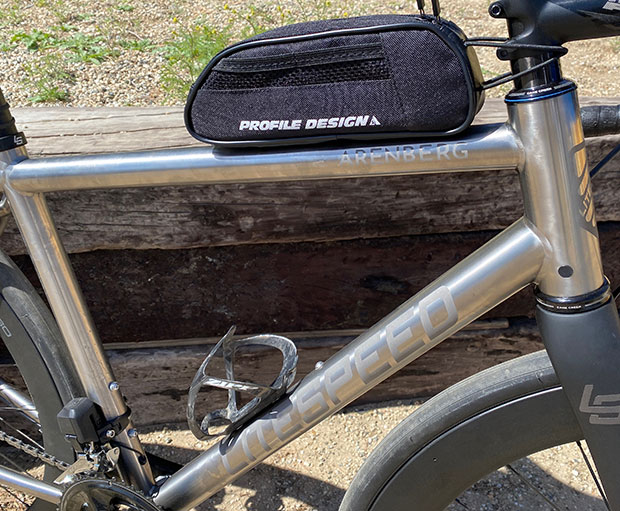
And of course the license plate.
Should you get a Litespeed Arenberg? No, you shouldn’t. Unless as with Tanya that particular bike checks the boxes. For her, the frame quality, fit geometry, handling geometry, front end motif, and value made this one of a very few bikes that worked for her. These were the important elements to us, and by front end motif I mean a front end that can easily be changed for comfort and fit. As you might tell from this bike touch points (aka contact points) are important to Tanya, so, the saddle and exactly how her hand rests on the handlebar are non-negotiable for her (and for me in my own riding).
Note I’m not writing a review of the Arenberg; I’m writing about the process by which we chose the Arenberg. We listed our imperatives and chose a bike that matched them. The sister brand to Litespeed is a partner here (Quintana Roo). While I don't always pay full retail for the products I use, I did for this one.


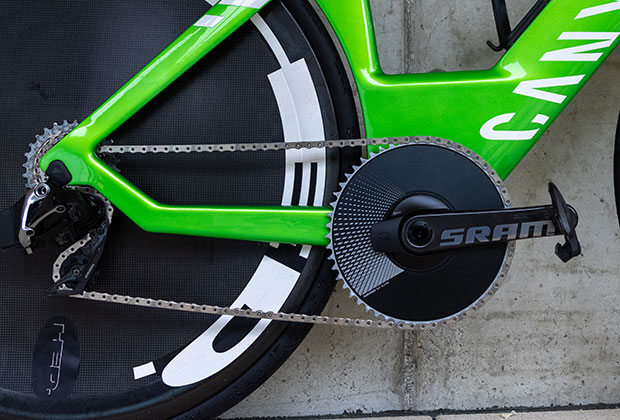
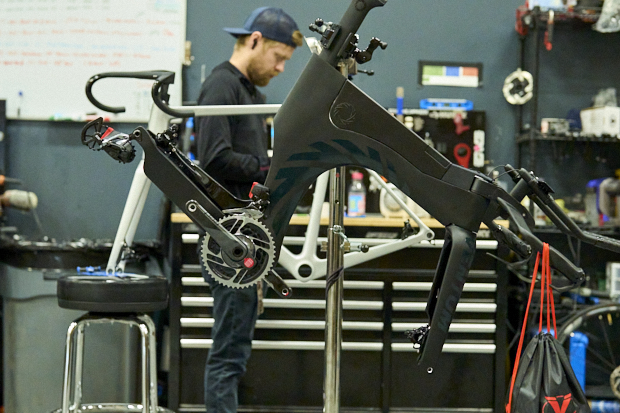
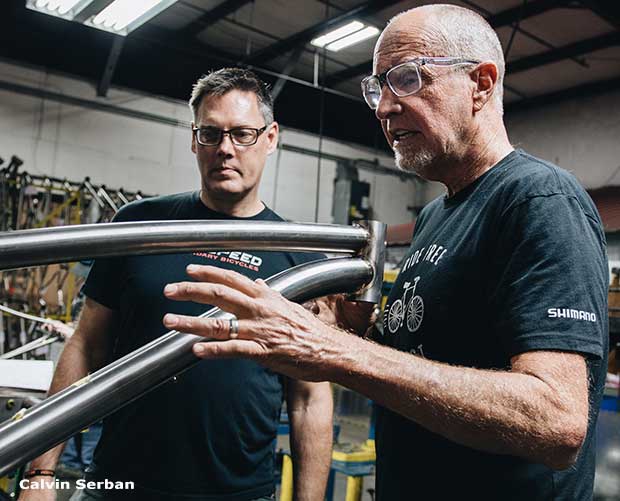
Start the discussion at slowtwitch.northend.network